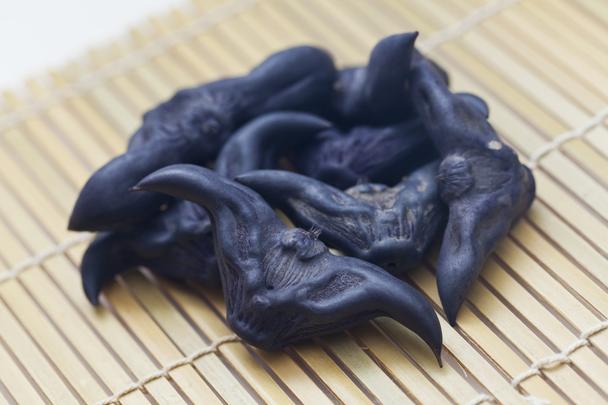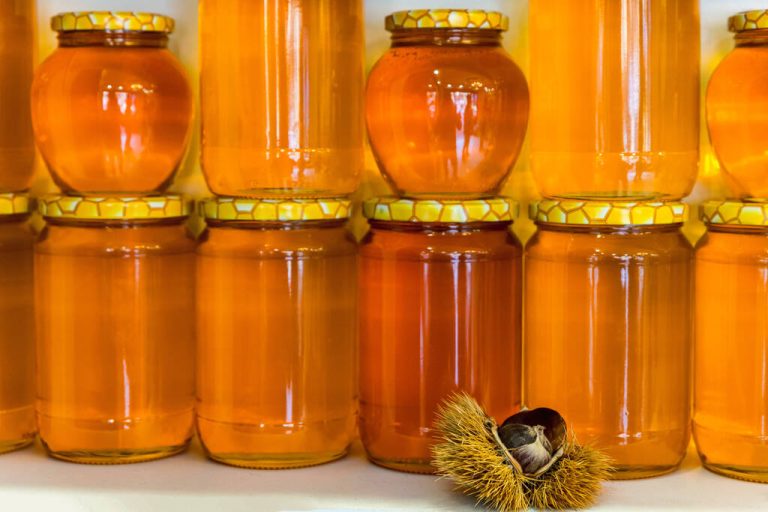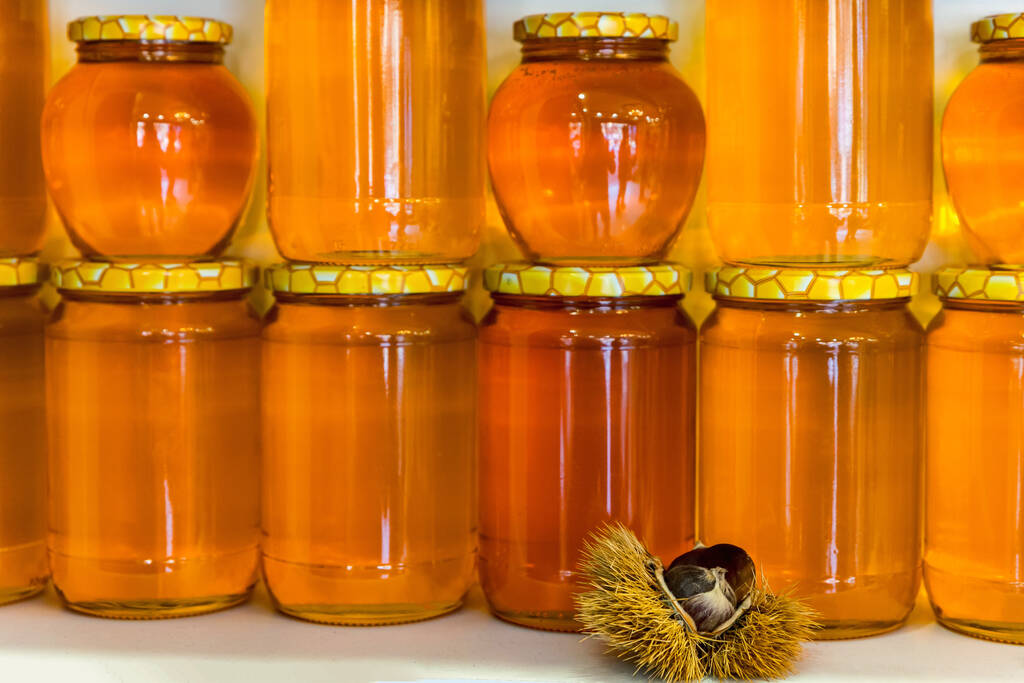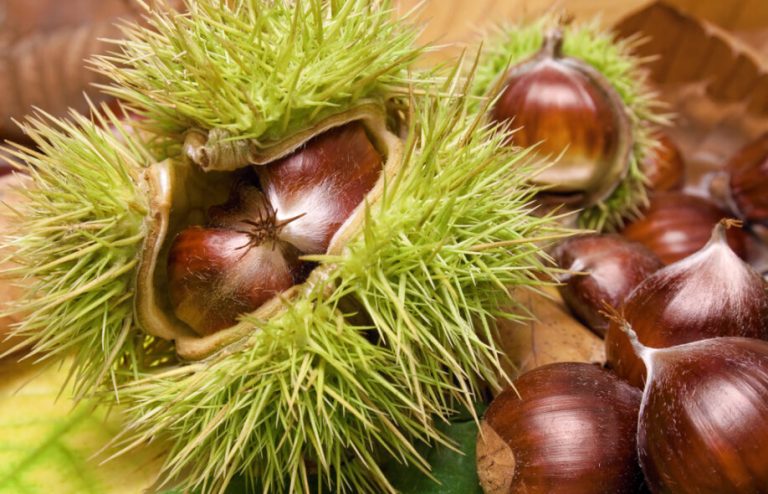The Chinese water chestnut is mainly known from Asian cuisine. But what is actually in it and what about its eco-balance?
Despite its name, the Chinese water chestnut is not a nut: the plant native to Asia, Africa, Australia and the Pacific (botanical: Eleocharis dulcis) is a sour grass plant. It thrives in ponds, swamps, and in other shallow bodies of water. The aquatic plant is mainly grown in stagnant water in various, very humid and hot, tropical and subtropical areas – especially in China and Southeast Asia.
The green sprouts, which are up to 1.5 meters long, protrude from the water and are used by the fissured goose, which is native to northern Australia, to build nests. The edible part of the water chestnut is the root tuber, which grows on a so-called rootstock – also called “rhizomes”. These got their name because of their resemblance to our typical sweet chestnut. Similar to these, they are brown on the outside but white and fleshy on the inside.
The Chinese water chestnut is often confused with the water nut (Trapa natans), which is also colloquially called water chestnut. However, the two plants are not related to each other: the water chestnut was once widespread even in our country, but is now one of the endangered species.

Cooking and baking with the water chestnut
Water chestnuts are mainly used in Asian cuisine. There they are prepared both raw and boiled, deep-fried, grilled or pickled. You can also use water chestnuts ground: Their high starch content makes them ideal as a flour substitute for baking.
Eaten raw, the water chestnut has a fresh and sweet taste. The consistency of the root is said to be reminiscent of apples. In China, they are often sold on small skewers as a fresh street snack. But be careful, the larvae of the giant intestinal fluke can easily nest in the uncooked water chestnuts. So always pay attention to the quality of the product.
Boiled, roasted and roasted, the water chestnut is cut into small slices and added to various wok dishes with vegetables and meat. The roots can also be chopped up and baked in Chinese mouth swaps (dim sum) or wonton. Even when cooked, the water chestnuts are still crunchy. This is probably due to the antioxidant ferulic acid, which stabilizes cell walls even in high heat.
With us you will find water chestnuts mainly in cans. They are sold in many Asian markets. Even in this state, they retain their crunchy texture. So you can easily add them to your dishes without much preparation. However, make sure that they are only soaked in water or their own juice so that they retain their flavor.
Because of its fresh sweetness, the delicious root is also used in desserts in China: in water chestnut cakes or sweet water chestnut soup. The cakes are made from water chestnut flour and are often served at Chinese New Year celebrations. Sweet soups are a special treat in Asia, which, in contrast to western desserts, have a more digestible sweetness and are slightly refreshing. Again, the fresh fruit is mixed with the flour, eggs and sugar.
Water chestnuts are healthy: the nutritional values
Water chestnuts are high in nutrients – and low in calories.
100 grams of tasty tuber consist to
73% water and too
24% from carbohydrates (of which 5% sugar and 3% fiber)
They contain 97 kcal (more than 100 grams of potatoes, less than 100 grams of pasta).
At 584 milligrams, potassium is the mineral with the largest proportion in water chestnuts.
In addition, water chestnuts are rich in various phenolic acids and antioxidants:
Ferulic acid (antimicrobial, also used in beer fermentation)
Gallates (used as antioxidants in food production)
Flavonoids (phytochemicals)
Due to their many healthy ingredients, water chestnuts can have the following positive effects on your health:
They slow down the aging process: the phenols in water chestnuts neutralize free radicals and thus reduce the effects of oxidative stress.
They inhibit tumor growth: Researchers discovered that the shell of the water chestnut suppresses the cell growth of tumor cells due to its numerous antioxidants. The flavonoids were mainly responsible for this; including in particular the substance luteolin, which reduced the growth of lung cancer cells.
They lower blood pressure: Due to their high potassium content, water chestnuts can have a very good effect on your heart health. Potassium has been shown to reduce the risk of heart disease and especially stroke.
They fill you up faster: Since water chestnuts are 73% water, they are very filling. At 97 kcal, they have about as many calories as a banana and are at least as filling.
They are antibacterial: a study found that the ethyl acetate from the water chestnut can act against typical food-borne bacteria such as staphylococci or E. coli.

Water chestnuts and their eco-balance
The water chestnut is mainly found in tropical and subtropical areas; in Africa, Asia and Australia. The main growing areas of the root crop are China, Taiwan, Thailand, Vietnam and the Philippines, so the transport routes are very long.
Since the water chestnut needs a certain day/night rhythm, cultivation is only worthwhile in very specific areas near the equator. Elsewhere, water chestnuts grow very sparsely and it is not commercially viable to grow them. That’s why you won’t find them regionally.
According to a WWF environmental report on China, 67% of freshwater bodies are polluted and acid rain falls on a third of the country. Since most water chestnuts are imported from China, contamination is not unlikely. In addition, according to the Ceres organic control body, many supposedly “organic products” imported from China do not meet organic standards.
Since water chestnuts are still relatively rarely bought here, the selection of independently controlled, fair and organic products is rather small and it is still very difficult to find out about the production circumstances of the tuber.
In Germany, water chestnuts are mainly sold in cans. So if you want to avoid waste, long transport routes and poor growing conditions, you should avoid water chestnuts.






